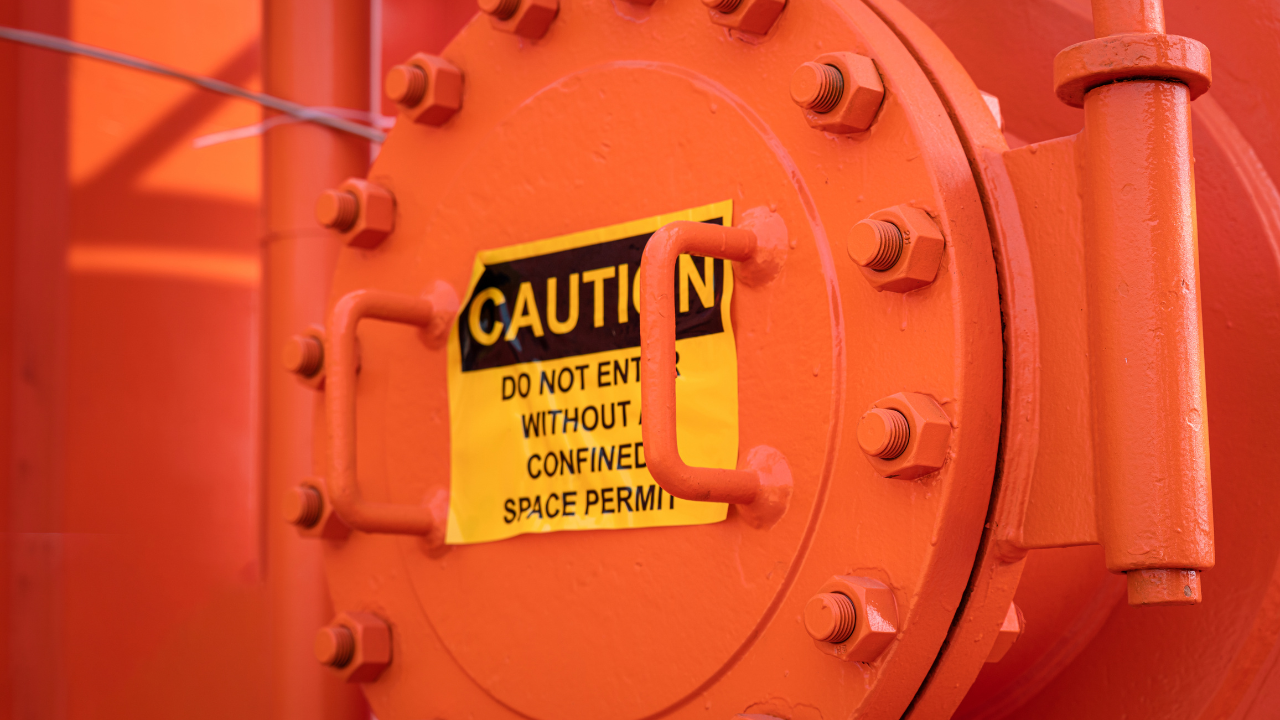Human Factors: Beyond the “Dirty Dozen”
Charlotte Adams
Why are Human Factors so Important?
About 80 percent of maintenance mistakes involve human factors (HF), according to the Federal Aviation Administration. The maintenance world has unique HF issues that are more severe and longer-lasting than elsewhere in aviation. Operators are looking at various techniques to combat HF challenges.
Human factors (HF) are constant watchwords in maintenance operations. Although HF maintenance training is not strictly required in the U.S., many U.S. maintenance organizations have adopted it because they see regulation on the horizon, want to comply with regulations elsewhere or simply accept the business case.
Why are human conditions, such as fatigue, complacency and distraction, so important? As one expert put it, if you scratch the surface of a maintenance incident, you’re likely to find HF issues. About 80 percent of maintenance mistakes involve human factors, according to Bill Johnson, the FAA’s chief scientific and technical advisor for human factors in aircraft maintenance systems. If they are not detected, maintenance errors can cause accidents. The agency’s HF “Operator’s Manual” states that maintenance was the primary cause of 8.3 percent of U.S. accidents in the 1990s. It has been a contributing factor in about 18 percent of aircraft accidents, Johnson said. A “maintenance event” started the accident chain in 26 percent of the worldwide accidents in 2003 for Western- and Eastern-built jets and turboprops, the manual states.
The cost of flight cancellations and delays is also steep. The cancellation of a Boeing 747-400 jumbo jet flight can cost an airline $140,000, according to researcher Alan Hobbs, in an Australian Transport Safety Bureau report. A delay at the gate can shave an average of $17,000 per hour off a company’s revenues, the report states. Ramp incidents wreaked $5-billion-worth of damage worldwide in 2004, according to the FAA manual.
Another reason to train relentlessly is the constant challenge of the maintenance environment. This world has unique HF issues that are more severe and longer lasting than elsewhere in aviation, as Hobbs points out. Mechanics work in a hazardous environment that demands physical strength, coordination and meticulous attention to detail in reading and recording data. They may work high up on the aircraft structure or deep in some confined inner space in extremes of hot and cold and at night. Communications between team members are crucially important but difficult in high-noise environments. Mechanics may need to diagnose and solve problems in the face of urgent time pressures, especially on the flight line. Pilots and air traffic controllers encounter great job stress, as well, but can put it behind them at the end of the day. Like doctors, however, mechanics know that their mistakes may affect the health of their charges months or years down the road.
Some maintenance shops have gone to the length of creating a “sterile environment,” said Richard Komarniski, president of Grey Owl Aviation Consultants. One civilian helicopter maintenance shop which his company does training for decided to improve focus by controlling phone calls, the presence of sales reps, visitors and other distractions in the work area. It made a difference, he said.
HF awareness needs to remain sharp, if for no other reason than to keep complacency at bay.Aviation Maintenance interviewed experts at Lufthansa Technik, Delta TechOps and Aveos to survey the latest HF programs in Europe, the U.S. and Canada. AM also talked to the FAA about HF studies and outreach.
MRO Programs
In their initial HF training, all three maintenance, repair and overhaul (MRO) organizations emphasize the “dirty dozen” — common sources of maintenance errors — as well as what’s sometimes called the “just culture” — a work environment that emphasizes objectivity, analysis and a balanced response to maintenance problems. All three offer initial and recurrent HF training, but both Delta and LHT add an upper management focus as well. “You have the confluence of all of these different things that can create the reason why somebody said, ‘I’m going to deviate from procedure,’” says Bob Baron, president of The Aviation Consulting Group, which specializes in human factors training, consulting and research. “In many cases it can be because of time stress or pressure that’s propagated at some of the highest levels of the organization.” LHT has also crafted an economic metric that includes human factors.
Initial HF training is typically an intense, two-day course that encourages participation. Aveos, which started its HF program in 1996, seems to have been doing it the longest of the three. The challenge is to “make a connection at the personal level,” so that the students are likely to apply the concepts in their lives, said Jim Cairns, the Canadian MRO’s general manager of technical training.
Line and base mechanics at Aveos, as well as executives with technical responsibilities, take the course, although employees working in sales and finance generally do not. Recurrent training occurs on a 36-month cycle. The Canadian MRO recently revised its program from a rehash of the initial course to focus on case studies and root cause analysis in the context of four homogeneous modules: 1) complacency, fatigue and lack of awareness; 2) communications, assertiveness and teamwork; 3) lack of resources, knowledge and norms; and 4) stress, pressure and distraction.
Another interesting aspect of HF training in Canadian maintenance facilities is that many of the mechanics coming through Aveos’ initial course already have been exposed to the concepts. Aircraft maintenance engineers receive their academic training at community colleges in Canada, and programs that are approved by Transport Canada include a human factors element.
Besides their initial and recurrent training, Delta and LHT also have developed various specialized modules. Delta is adding lessons learned from its initial HF course to its Technical Operations Policies and Procedures manual. The manual also includes the methodology used in Delta’s new “administrative action decision tool class” aimed at managers, general managers and directors.
The new class sets forth guidelines about how to handle errors, incidents and accidents, explained Christian Vehrs, an instructor and developer in Delta’s human factors program. It uses a methodology derived from FAA’s Enforcement Decision Tool (see FAA Order 2150.3), a document that provides a way to categorize behavior by intention. Participants learn to look at the mesh of human factors involved in a case, such as the availability of proper documentation, fatigue, pressures and work place norms. The aim is to guide management into making more consistent decisions.
Whereas in the past, there had been a “wide range of outcomes” in management decisions, the new training has helped to instill more consistency. The first, one-hour segment of the class emphasizes the need for more consistent outcomes for similar incidents and how variables affect administrative actions. The second reviews the new policy. Then an instructor shows how to apply the tool via a Delta Air Lines case study.
In the remaining two hours the students break into small groups and learn to apply the tool for themselves. So far, 261 managers, general managers and directors have taken the course, and the consistency of the outcomes for these incidents has been remarkable, the MRO said. The primary incident used during the instructor-led module has generated the recommended outcome 100 percent of the time.
LHT also provides specialized training. Senior managers, for example, receive a one-day initial HF training course that focuses on problem-solving, communications and their responsibilities within the organization. Supporting and certifying staff members who sign off on overhauls also receive an additional two days of recurrent training related to their technical responsibilities, including one day of HF training, said Stephan Liebenow, team leader for qualification and training, with LHT’s commercial overhaul and VIP completions organizations.
In addition, the German MRO is also developing HF training for incident investigators to show them how to conduct interviews in a non-punitive atmosphere, Liebenow said. Developed initially for line maintenance investigators, the techniques are being adapted to base maintenance.
LHT also stresses its positive work culture. “I’m interested in the facts — what happened, why and how to improve things,” Liebenow said. “It’s a different approach, and people realize that and come to us.”
Error Reporting Systems
Whether voluntary or required, error reporting systems are crucial and therefore commonplace in the industry. Participants “are providing information, as well as listening to the instructor,” Liebenow pointed out. LHT prides itself in being “a learning organization,” and understands that input from these interactions and the reporting system is “good information that you wouldn’t get from traditional audits.” An understanding of human factors helps to identify the root causes behind problems and to come up with corrective actions.
LHT’s reporting system also helped to adjust German legal requirements. Some inputs concerned a requirement that anyone taking part in aircraft radio communications should have a full radio license, Liebenow said. LHT did not think that it is cost-effective to require a mechanic running a functional test of a radio to have a radio license, as long as the technician knows what he’s doing. “After two years of hard work, we managed to change the law, so that there is an exception for maintenance mechanics,” Liebenow said.
Unlike some other maintenance organizations, however, LHT also focuses on the economic side of human factors. The economic benefit of human factors is a component of a company-wide, proprietary metric called the “cost of non-quality.” Examined every month, this metric indicates that quality is steadily improving, he said. However, since human factors are only a single component of this indicator, HF training can only be considered as a contributing influence to this positive trend.
Delta, for its part, encourages technicians to use the NASA Aviation Safety Reporting System (ASRS) as a means of collecting data. Delta also has partnered with FAA under the Aviation Safety Action Program (ASAP), which captures maintenance error data that, while shared with the agency, is proprietary to the individual airline. ASAP inputs are received by a committee including a representative from the maintenance provider, union (if represented) and the FAA, Johnson said. Problems are identified and resolved at the local level. Once the ASAP data has been de-identified, it is shared with other airlines, manufacturers and repair organizations, Delta said.
Delta also has a system through which frontline technicians can propose fixes to technical documents. Suggestions submitted electronically through Delta’s Technical Document Change Request system are typically processed within three days, Vehrs said. Last year more than 40,000 recommendations were received.
Aveos’ error reporting system, known as EtQ for Excellence through Quality, feeds into a database of audit findings and individual concerns. As with LHT, individual inputs may be anonymous. “Concern reports” trigger investigations, which assess risks and apply abatement measures. Data is shared with Transport Canada through the agency’s principal maintenance inspectors. Although name-tagged data is not de-identified, it cannot be used in enforcement actions against employees except in cases of gross negligence, criminal intent or sabotage.
U.S. Regulatory Horizon
Although FAA has led the way in maintenance HF research, the United States — unlike Europe and Canada — has no legal requirement for maintenance human factors training at this time. Thanks to the European regulations, however, the more than 1,200 U.S. repair stations with European approvals have HF programs.
That’s a long way from saying the U.S. government isn’t doing anything. There is a lot of advisory material, and regulatory action is expected in the future. Advisory Circular (AC) 145-10, for example, states: “Training in maintenance human factors is an essential part of an FAA-approved training program. The repair station’s submitted training program and any revision thereto must include human factors elements.” The AC goes on to “suggest” the elements that should be included in a repair station’s program. “As with everything, once the FAA identifies something as a ‘best practice’ or even a ‘good idea,” industry usually takes it on,” said Sarah MacLeod, executive director of the Aeronautical Repair Station Association (ARSA).
Considering the amount of guidance material that is available and the number of U.S. airlines and MROs that have voluntarily adopted HF programs, “I don’t lose sleep at night because there’s not a rule,” Johnson said. “Would I like a rule — yes. But do we have a situation that’s precarious — absolutely not.”
Beginning in 2007, FAA also has stepped up the maintenance HF training for its own airworthiness inspectors, Johnson said. About half of the inspectors have now been through a new three-day course.
Johnson thinks that people also are adopting HF training because of International Civil Aviation Organization (ICAO) requirements for safety management systems (SMS), which eventually will become an FAA requirement as well. “You couldn’t possibly satisfy what you do for a safety management system without having a human factors program,” he asserted.
Human Factor Research
Much research has been conducted in the area of fatigue, one of the chief culprits in the dirty dozen. One study Johnson participated in before he joined the FAA collected 50,000 hours’ worth of “actiwatch” sleep data via accelerometers that mechanics wore 24 hours a day. The study, which was conducted over 18 months, through all seasons of the year and in the north, southeast and west of the country, found that mechanics get an average of about five hours and five minutes of sleep, which is below average for normal North Americans, Johnson said. The finding didn’t really vary by age, part of the country or time of year. Nor were there significant differences, based on which shift was worked.
A recent NASA study, “Maintenance Personnel Fatigue Related Incidents,” suggests that maintenance errors tend to be more common in the wee hours. The study, which looked at more than 100 ASRS reports filed from 1990 to the present, indicated that 30.5 percent of the incidents occurred from 1 to 6 a.m. in the morning, 20 percent from 6 p.m. to midnight, and only 14.3 percent between 6 a.m. and noon local time. About one-fifth of the reports (21 percent) did not state a time.
Johnson maintains that there are so many scientific solutions to some of the fatigue issues that it’s more important, at this time, to distribute the data rather than collect more of it. To that end, FAA has started a project to take the scientific data that exists and “get it out in a way that normal users can apply it — airlines, MROs and individual employees.”
Another new program involves adapting peer-to-peer safety audits that have proved useful in operational settings to the maintenance world. The program will encompass line, base and ramp operations.
The audit program will cast a wide net. It will look at the way maintenance projects are planned, the disposition of tools, procedures, final inspections and preparations to sign off aircraft, Johnson said. One of the challenges is going from a 30-page, single-spaced compilation of checklists to an operational form that mechanics can use in a quick audit.
Another initiative in the pre-award stage is the Future of the Aviation Maintenance Technician. The three- to five-year program will address long-term issues such as demographics and technology evolution, Johnson said. FAA is also working on a 2010 “fatigue calendar,” focusing on a different aspect of fatigue each month. An earlier calendar on the dirty dozen was wildly successful, Johnson said, shipping 160,000 copies in 2008.
Another successful project was the Maintenance Human Factors Presentation System, an information package that includes around 170 Powerpoint presentations, 11 videos produced by FAA and 40 animation files. It’s free of charge and can be customized by individual users. So far, more than 15,000 DVDs have been distributed worldwide. Check out the FAA’s “dirty dozen” pamphlet.
Charlotte Adams
Related Articles

All About Eye Protection

Arc Flash/Arc Blast Review with Safety Suggestions for Design & Maintenance

CSA Launches First Confined Spaces Standard in Canada

Do You Need NFPA 70E?

Electrical Hazards

Eye Injuries are a Serious Threat to American Workers




